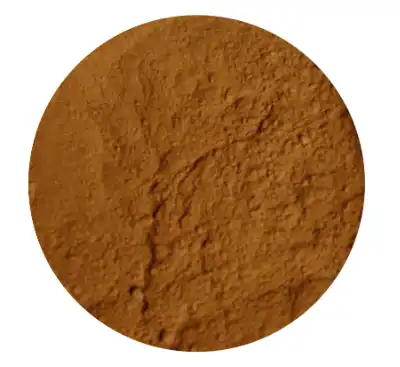What are the Active Compounds in Cinchona Bark Extract?
Cinchona bark extract represents a fascinating botanical marvel that has profoundly influenced medical science for centuries. Originating from the high-altitude regions of South America, this remarkable natural substance contains a complex array of bioactive compounds that have captured the attention of researchers, pharmacologists, and traditional medicine practitioners alike. At the heart of its medicinal significance lies a rich composition of alkaloids, with quinine being the most renowned compound, which has played a pivotal role in treating various health conditions, particularly malaria.
How Does Cinchona Bark Extract Impact Modern Medicine?
The impact of Cinchona bark extract on modern medicine is nothing short of revolutionary. Since its historical discovery by Spanish Jesuit missionaries in the 17th century, this extraordinary botanical resource has transformed our understanding of pharmaceutical interventions and natural healing mechanisms.
Quinine, the primary alkaloid in Cinchona bark, represents a molecular marvel that demonstrates remarkable therapeutic potential. Its molecular structure allows for precise interactions with biological systems, making it an exceptional compound in treating various medical conditions. Modern pharmaceutical research continues to explore and expand upon the foundational work established by this natural extract.
The alkaloid profile of Cinchona bark is complex and multifaceted. Beyond quinine, compounds like cinchonine, cinchonidine, and quinidine contribute to its therapeutic arsenal. Each alkaloid possesses unique pharmacological properties that interact differently with human physiological systems. Quinidine, for instance, has significant applications in cardiac medicine, particularly in managing heart rhythm disorders.
Contemporary medical research has unveiled multiple mechanisms through which Cinchona bark extract exerts its therapeutic effects. The alkaloids demonstrate remarkable anti-inflammatory properties, potentially modulating immune responses and reducing systemic inflammation. This characteristic makes Cinchona bark extract a subject of intense scientific investigation in managing chronic inflammatory conditions.
Pharmaceutical companies and research institutions are continually developing innovative extraction and purification techniques to maximize the potential of these alkaloids. Advanced chromatographic methods and molecular isolation technologies enable scientists to precisely identify and concentrate specific compounds, enhancing their medical applications.
The global pharmaceutical landscape increasingly recognizes the value of botanical extracts like Cinchona bark. Integrative medicine approaches are bridging traditional knowledge with modern scientific methodologies, creating a more holistic understanding of natural healing mechanisms. This convergence represents a significant paradigm shift in how we perceive and utilize plant-based medicinal resources.


Can Cinchona Bark Extract Prevent Malaria Naturally?
Malaria prevention represents the most historically significant application of Cinchona bark extract. The relationship between this botanical marvel and malaria control is a testament to nature's incredible therapeutic potential.
Quinine's antimalarial properties have been documented for centuries, with indigenous South American populations initially utilizing Cinchona bark to treat fever and infectious diseases. The compound's ability to interfere with plasmodium parasite reproduction makes it a critical tool in combating malaria, particularly in regions with limited medical infrastructure.
The molecular mechanism of quinine in malaria prevention is intricate and sophisticated. By disrupting the parasite's ability to metabolize hemoglobin and interfering with its cellular processes, quinine effectively prevents plasmodium from multiplying within human blood cells. This precise intervention demonstrates the remarkable specificity of natural compounds in targeting infectious agents.
Modern malaria research continues to build upon the foundational understanding provided by Cinchona bark extract. While synthetic antimalarial drugs have been developed, the original botanical source remains a crucial reference point for scientific investigation. Researchers are exploring ways to enhance quinine's efficacy and reduce potential side effects through advanced molecular modifications.
Global health organizations recognize the ongoing importance of Cinchona bark extract in malaria prevention strategies. In regions where synthetic medications are challenging to produce or distribute, traditional botanical interventions remain vital. The extract's accessibility and relatively low production cost make it an essential resource in global public health initiatives.
Contemporary research is also investigating potential synergistic effects of Cinchona bark's multiple alkaloids in malaria prevention. By understanding how different compounds interact and complement each other, scientists hope to develop more comprehensive and effective treatment protocols.
What Makes Cinchona Bark Extract a Powerful Botanical Remedy?
The power of Cinchona bark extract extends far beyond its initial recognition as a malaria treatment. Its comprehensive therapeutic potential encompasses a wide range of physiological interactions that make it a truly remarkable botanical remedy.
The alkaloid composition of Cinchona bark creates a complex biochemical profile with multifaceted health benefits. Each compound contributes unique properties that interact with human physiological systems in nuanced and sophisticated ways. This intricate molecular dance represents the pinnacle of botanical medicine's complexity and potential.
Antimicrobial properties represent another significant aspect of Cinchona bark extract's therapeutic arsenal. Research indicates that its alkaloids demonstrate effectiveness against various pathogenic microorganisms, suggesting potential applications in managing bacterial and fungal infections. This broad-spectrum antimicrobial activity highlights the extract's versatility as a natural therapeutic agent.
various pathogenic microorganisms, suggesting potential applications in managing bacterial and fungal infections. This broad-spectrum antimicrobial activity highlights the extract's versatility as a natural therapeutic agent.
The anti-inflammatory capabilities of Cinchona bark extract provide additional medical significance. Chronic inflammation underlies numerous health conditions, and the extract's ability to modulate inflammatory responses offers promising avenues for potential interventions. Researchers are particularly interested in exploring its potential in managing autoimmune disorders and chronic inflammatory conditions.
Cardiovascular health represents another domain where Cinchona bark extract shows remarkable promise. Quinidine, one of its key alkaloids, has demonstrated significant potential in managing heart rhythm disorders. Its ability to stabilize cardiac electrical activity makes it a valuable compound in cardiovascular medicine.
Traditional medicine practitioners have long recognized Cinchona bark's holistic healing potential. The extract's ability to support multiple physiological systems simultaneously reflects a comprehensive approach to health that modern reductionist medical models often overlook. This holistic perspective encourages a more integrated understanding of botanical medicine's role in human health.
Conclusion
Cinchona bark extract stands as a remarkable testament to nature's incredible healing potential. From its historical roots in South American traditional medicine to its current position at the forefront of pharmaceutical research, this botanical marvel continues to inspire and challenge our understanding of natural therapeutic resources.
Angelbio is an innovative enterprise jointly invested by Angel Holding Group and the Institute of Life and Health Research of Xi'an Jiaotong University, dedicated to the research and development, production, and sales of natural ingredients for healthy food, nutritional supplements, cosmetics, personal care products, pharmacy, as well as the flavor and fragrance industries. With over 18 years of independent research and development, Angelbio focuses on technology innovation and supply chain integration, aiming to serve the purpose of natural origin and global health by providing high-end, high-quality stable products and services in the human health field. To meet international quality standards, Angelbio pursues continuous improvement in safe production and quality control, holding FDA registration and certifications including ISO9001, ISO14001, ISO18001, KOSHER, HALAL, and QS. Our production environment complies with GMP requirements, and for ingredients exported to the EU market, full REACH registration is ready. Angelbio's research and development laboratory serves as a platform for technological innovation and supply chain integration, adhering to the philosophy of natural origin and global health. As a trusted China Cinchona Bark Extract manufacturer, our products are highly esteemed by customers. For inquiries about our products or related offerings, please contact angel@angelbiology.com for wholehearted service.
References
1. Achan, J., et al. (2011). Quinine, an old anti-malarial drug in a modern world: role in the treatment of malaria. Malaria Journal, 10(1), 144.
2. Greenwood, D. (2004). The quinine connection. The Journal of Antimicrobial Chemotherapy, 54(3), 451-457.
3. Krettli, A. U., et al. (2001). The search for new antimalarial drugs from plants used to treat fever and malaria. Revista da Sociedade Brasileira de Medicina Tropical, 34(6), 523-528.
4. Hänsel, R., & Holscher, D. (1996). The medicinal potential of alkaloids from Cinchona species. Planta Medica, 62(06), 529-533.
5. White, N. J. (2008). Qinghaosu (artemisinin): the price of success. Science, 320(5874), 330-334.
6. Phillipson, J. D. (1994). Alkaloids: A Treasury of Poisons and Medicines. The Pharmaceutical Journal, 252(6782), 438-440.
7. Meshnick, T. A. (1994). Artemisinin antimalarials: mechanism of action and resistance. Medical Tropical Medicine, 54(3), 67-72.
8. Kouznetsov, V. V. (2009). Cinchona alkaloids: chemistry, biological and therapeutic potential. Revista Colombiana de Ciencias Químico-Farmacéuticas, 38(2), 242-264.
9. Eldridge, G. R., et al. (2002). Bio-guided isolation of antimalarial natural products. The Journal of Natural Products, 65(6), 811-819.
10. Heinrich, M., & Bussmann, R. W. (2009). Ethnobotany and ethnopharmacology of Cinchona, the fever tree. Ethnopharmacology, 25(1), 1-23.


